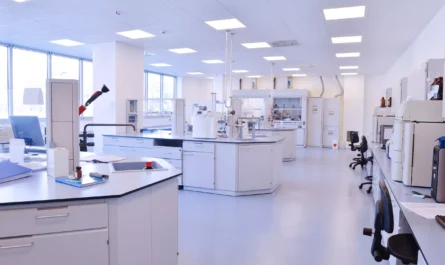3D printing or additive manufacturing is an innovative technology that is transforming the healthcare industry in tremendous ways. This promising manufacturing technique allows medical professionals to create anatomical models, surgical guides, customized implants and prosthetics with precision. With advancements in materials and printing capabilities, 3D printing is poised to revolutionize the delivery of healthcare services.
Faster Development of Medical Devices
Complex designs that would have taken weeks to machine can now be 3D printed in just hours or days. This significantly reduces the product development cycle. Researchers and engineers can test fit and function earlier in the design process. Issues are discovered sooner, enabling quick design improvements before moving to mass production.
For example, surgeons at University College London used 3D printing to rapidly develop an anatomically accurate artificial artery with branches, allowing them to practice complex artery repair surgeries. Traditional manufacturing would have taken much longer to produce such a detailed model. The ability to speed up design testing helps bring innovative devices to faster.
Customized Implants and Prosthetics
One of the most promising applications of 3D printing in healthcare is the creation of patient-specific implants and prosthetics. Using medical imaging data like CT and MRI scans, digital 3D models can be precisely replicated to match an individual’s anatomy. Surgical guides, dental crowns and orthopedic joint replacements can be 3D printed based on each patient’s unique needs.
For orthopedic and craniofacial surgeries, 3D printed implants are designed to perfectly fit complex anatomical sites. They minimize surgical cuts and adjustment time while increasing implant integration with tissues. Patients benefit from reduced recovery periods and better functional outcomes. In maxillofacial reconstruction, 3D printed prosthetics help restore facial features and symmetry for people who have suffered injuries or abnormalities.
Anatomical Models for Education and Surgical Planning
3D printed anatomical models provide a hands-on teaching and learning experience that complements textbooks and virtual media. Medical schools worldwide use intricate 3D printed organs, bones and full body replicas to demonstrate complex concepts to students. Developing a tactile understanding of human anatomy aids in diagnostics and treatment planning.
Surgeons also leverage 3D printed organ models to visualize patient pathology, plan surgical approaches and simulate procedures before going in for real operations. Risky parts like tumor resections can be rehearsed. 3D printed heart models accurately depict valves, vessels and defects to help cardiologists determine minimally invasive approaches. Such models promote better preoperative understanding and intraoperative performance.
Tissue Engineering and Organ Printing
An exciting long term application of 3D printing lies in tissue engineering and organ printing. Researchers are developing specialized bio-inks made of living cells, growth factors and biocompatible materials. Layer-by-layer deposition of these bio-inks aims to fabricate transplantable tissues and simple organ structures.
So far scientists have printed skin, bone, cartilage, blood vessels and liver tissues. In the future, more complex miniature organ models and organ components like heart valves may become feasible. The ability to print functional organs could potentially address the severe shortage of donor organs worldwide. 3D bioprinting holds promise to generate personalized living replacements for failing tissues and organs.
Widespread Accessibility
Thanks to increased availability of desktop 3D printers and online 3D printing services, anatomical models and customized medical parts are no longer restricted to large hospitals. Remote and community healthcare facilities gain access to cutting edge patient-specific tools at an affordable cost. Low-resource regions benefit from locally 3D printed surgical guides and prosthetics.
The relatively lower production costs compared to traditional manufacturing makes 3D printed medical solutions practical for a larger population globally. As technology scales up, 3D printing has the potential to enhance healthcare delivery even in underdeveloped areas that lack advanced infrastructure and resources. This promotes universal access to quality and equitable medical care.
Challenges and Future Outlook
While 3D Printing In Healthcare unlocks tremendous opportunities, certain challenges still exist regarding regulatory approvals, printing accuracy, mechanical integrity and bio compatibility of materials. Long term clinical studies are needed to validate the safety, efficacy and cost-effectiveness of 3D printed implants and devices.
Going forward, advancements in polymer chemistry, nanotechnology, bioprinting and artificial intelligence will propel the field to new heights. We may see highly functional bio- materials, multi-tissue organ fabrications and AI-assisted precision modeling for personalized prosthetics in the next decade. As material properties and resolutions improve, the applications of 3D printing in customized surgery, regenerative medicine and virtual surgical simulation are bound to expand rapidly.
3D printing holds immense capability to transform healthcare delivery by enabling customized, cost-effective and accessible solutions. With continued research and innovation, it will revolutionize medical device manufacturing, regenerative therapies and patient diagnostics and treatment in the years to come.
Note:
1. Source: Coherent Market Insights, Public sources, Desk research
2. We have leveraged AI tools to mine information and compile it



